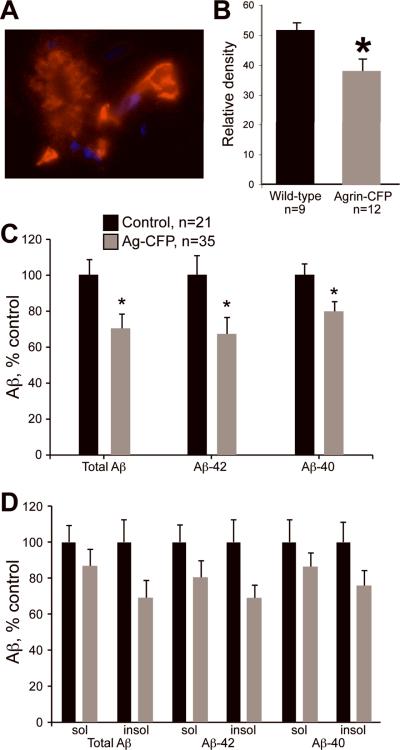Figure 6.
Effect of transgenic Agrn overexpression on β-Amyloid (Aβ) levels. (A) Staining with an anti-GFP antibody detects transgenic AGRIN-CFP in both plaques and blood vessels, indicating that the transgenic protein localizes to plaques and the blood-brain barrier. Note the staining intensity is much higher in the blood vessel (arrow) than in the plaque. (B) In filter trap assays, 6-month-old Agrn-CFP transgenic mice had significantly reduced SDS-insoluble Aβ levels vs. age-matched control littermates. Data shown are for male mice only; mean relative signal intensity based on densitometry ± SD, t test p = 0.02; animal numbers are shown. (C) Levels of Aβ were further examined by ELISA in 6-month-old mice. Transgenic expression of Agrn-CFP significantly reduced total amyloid, Aβ-42, and Aβ-40 levels compared to littermate controls. Asterisks indicate t test p values <0.05, animal numbers are given. Results shown are for male mice, values are mean percent of control values ± SEM. (D) Further subdividing Aβ species into DEA-soluble and insoluble fractions, indicated that the greatest contribution of the reduction seen with Agrn-CFP overexpression came from reduced Aβ-42 insoluble amyloid, although differences did not reach statistical significance (p values 0.06–0.08).

